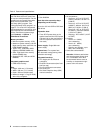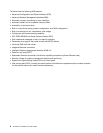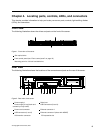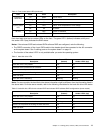
Table 3. Features and specications (continued)
RAID controllers:
• Onboard SATA Software RAID
• ThinkServer 8708ELP SAS RAID
Adapter
• ThinkServer 8708EM2 RAID
Adapter
• ThinkServer RAID 700 Adapter
Electrical input
• Input voltage:
– Low range:
Minimum: 100 V ac
Maximum: 127 V ac
Input frequency range: 50 to
60 Hz
– High range:
Minimum: 200 V ac
Maximum: 240 V ac
Input frequency range: 50 to
60 Hz
Notes:
1. Power consumption and heat
output vary depending on the
number and type of optional
features installed and the
power-management optional
features in use.
2. The sound levels were measured
in controlled acoustical
environments according to
the procedures specied by the
American National Standards
Institute (ANSI) S12.10 and
ISO 7779 and are reported in
accordance with ISO 9296.
Actual sound-pressure levels in a
given location might exceed the
average values stated because
of room reections and other
nearby noise sources. The
noise emission level stated
is the declared (upper limit)
sound-power level, in bels, for a
random sample of system.
3. There is no keyboard connector
or mouse connector on the
server. You can connect a USB
keyboard and USB mouse to
the server by using the USB
connectors.
Software programs
Lenovo provides software to help get your server up and running.
EasyStartup
The ThinkServer EasyStartup program simplies the process of conguring RAID and installing supported
Microsoft® Windows® and Linux operating systems and device drivers on your server. The EasyStartup
program is provided with your server on the ThinkServer EasyStartup DVD. The DVD is self-starting
(bootable). The user guide for the EasyStartup program is on the DVD and can be accessed directly from the
program interface. For additional information, see “Using the ThinkServer EasyStartup program” on page 76
.
EasyManage
The ThinkServer EasyManage Agent enables this server to be managed by the centralized console of an
EasyManage Core Server over the network. The ThinkServer EasyManage Agent is supported on 32-bit and
64-bit Windows, Red Hat, and SUSE operating systems.
Reliability, availability, and serviceability
Reliability, availability, and serviceability (hereafter referred to as RAS) are three important server design
features. The RAS features help you to ensure the integrity of the data stored on the server, the availability of
the server when you need it, and the ease with which you can diagnose and correct problems.
Chapter 3. Features and technologies 7


















